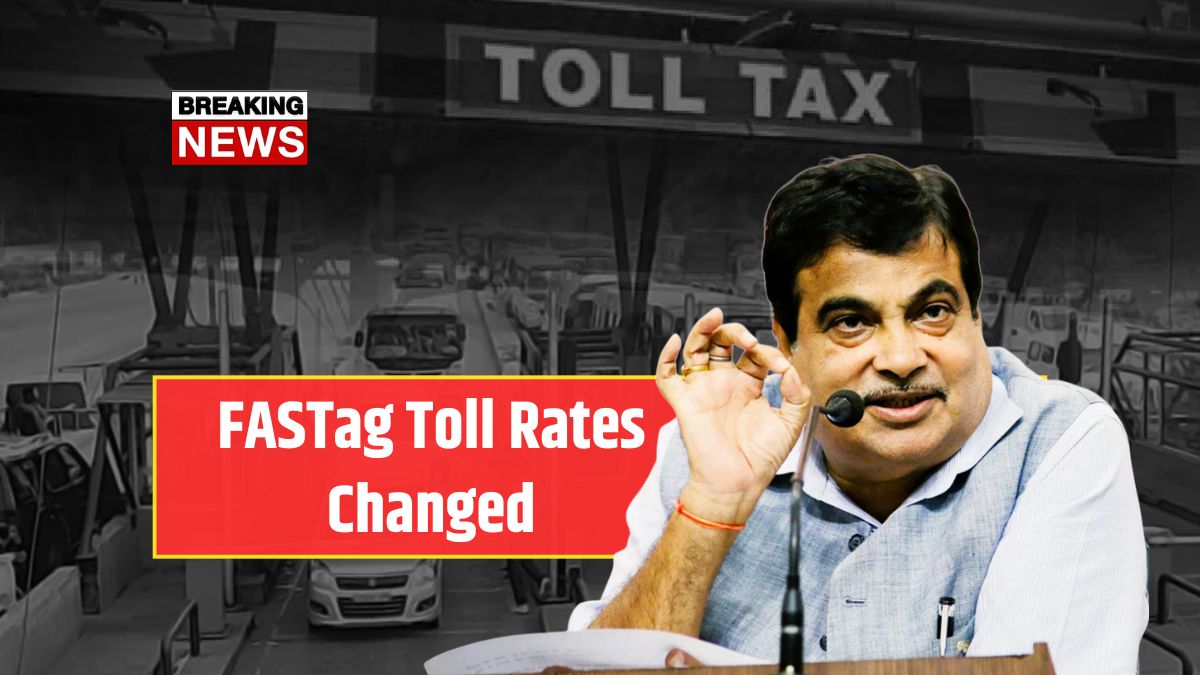New FASTag Toll Payment Rule – If you use FASTag for traveling on highways, you need to know about the latest update from the Ministry of Road Transport and Highways. They’ve rolled out new toll payment rules, and they’re not just minor tweaks – these are changes that could directly affect your daily commute or your weekend road trip.
The idea behind this move is simple: to make toll payments more seamless, eliminate cash transactions, and ensure everyone sticks to the rules. The government wants a 100 percent digital toll system across all highways, and this is a big step in that direction.
Let’s break down what’s new and what you should keep an eye on.
What’s the New Rule All About?
Under the new system, if your FASTag isn’t working, inactive, or doesn’t have enough balance, you’ll be charged double the toll. And in some cases, your vehicle might not even be allowed to pass the toll plaza until the issue is resolved. To make things smoother, the government has updated the toll deduction software so that everything happens in real-time. That means no more waiting at toll booths while the system processes your payment.
They’ve also introduced geo-fencing – basically, your phone will notify you when you’re nearing a toll plaza, giving you a heads-up if you need to check your balance or make a recharge.
Main Points You Should Know
- FASTag is now mandatory for all private and commercial vehicles.
- If your FASTag is inactive or blacklisted, penalties are now twice the usual toll fee.
- Toll deductions will now be reflected immediately through SMS or mobile apps.
- Many national highways have also updated their toll rates.
- ANPR (Automatic Number Plate Recognition) technology will be used to keep things smooth and track violations.
New Toll Rates on Popular Highways
Several national highways have revised toll rates for different vehicle types. For example:
- Delhi to Meerut Expressway: Cars will now pay around Rs 165 instead of Rs 155.
- Mumbai to Pune: Light commercial vehicles now pay about Rs 290.
- Yamuna Expressway: SUVs or larger vehicles pay up to Rs 435.
The penalty for not using FASTag? You’ll be charged double — so it’s better to stay updated and compliant.
Also, there’s a time limit for free return trips — typically 12 to 24 hours, depending on the highway.
What If You Don’t Have a FASTag or It’s Not Working?
If your FASTag is expired, not linked properly, or out of balance, here’s what could happen:
- Toll booths will charge double the regular amount.
- Some toll plazas might deny you entry altogether.
- If you keep violating the rules, you might face legal action or be blacklisted.
So it’s super important to make sure your FASTag is linked to your vehicle, connected to your phone number, and has enough balance before a trip. You can check and recharge using your bank app or apps like Google Pay, PhonePe, Paytm, etc.
New Tech Tools to Help You Out
To make things easier, the government has rolled out new features like:
- Geo-fence alerts: You’ll get notifications when you’re close to a toll booth.
- Real-time SMS updates on toll deductions and wallet balance.
- Mobile apps now show you your FASTag recharge status and transaction history.
- Voice alerts for drivers using Bluetooth or audio devices.
All these tools are meant to keep you informed and prevent any surprise charges.
Penalty Rules in Simple Terms
Here’s a quick look at what happens in different situations:
- No FASTag at all: You’ll pay double.
- Low balance: You might be denied entry or charged double.
- Expired tag: No entry plus extra toll.
- Duplicate FASTag: Permanent ban.
- Blocking the toll lane: Fines up to Rs 1000 and your vehicle may be towed.
Recharging Your FASTag Made Easy
You’ve got multiple options to recharge:
- Use your bank’s app or popular apps like Paytm, PhonePe, or Google Pay.
- Enable auto-recharge so your wallet is topped up automatically.
- Use SMS-based recharge if supported by your bank.
- Download the NHAI FASTag app to manage everything in one place.
Also, make sure your vehicle registration and ID documents are updated with the bank to avoid any verification issues.
Why This Change Was Necessary
The government has been getting a lot of complaints about delays and rule violations at toll booths. The new system is designed to:
- Speed up toll payments.
- Reduce cash handling and long queues.
- Ensure smoother flow of traffic.
- Cut down on manual errors and reduce the load on toll staff.
With more than 75 million FASTag users across India, this upgrade was long overdue.
These new FASTag rules are all about making your travel experience smoother and faster. If you’re someone who uses highways frequently, just keeping your FASTag active and topped up will save you a lot of hassle — and money. You’ll avoid fines, unnecessary delays, and stay on the right side of the law.






